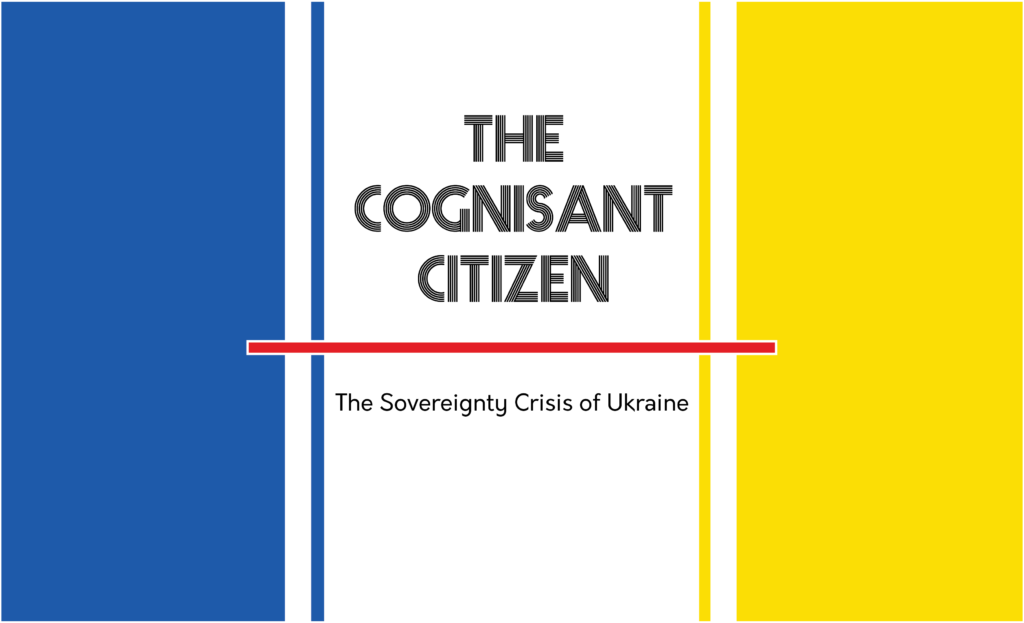
*Note: Because the situation unfolds every day, the information presented in this article is a conclusive account of the events that have transpired up until the morning of February 26th, 2022
On Thursday, Russian President Vladimir Putin gave a speech that made it clear to the world of his plan to start a special military operation against Ukraine. This left both the country and its citizens in a state of chaos and horror as explosives began raining from the skies. Furthermore, Putin put out a statement warning The North Atlantic Treaty Organisation (NATO) and all the other allies of Ukraine not to interfere in the matter or face the consequences as an act of intimidation.
Albeit the immediate reasons for Russia’s action revolve around Ukraine’s request to join NATO, the tension between the two states had started heating up long before this appeal was made.
Here is the complete timeline of what led to the current ongoing Russo-Ukrainian Crisis.
March 1947: The Cold War Begins
Following World War II, an implicit rivalry and enmity emerged between the United States and the Soviet Union. Alarmed by the Soviet dominance of Eastern Europe, the Allies feared the spread of Soviet power in Western Europe. In contrast, the Soviets were desperate to keep control of Eastern Europe to protect themselves from Germany.
April 1949: The Formation of NATO
A significant milestone of the war was the formation of The North Atlantic Treaty Organisation (NATO), which served as an alliance between 28 European and 2 North American countries.
August 1991: The Gorbachev Coup
The 1991 Soviet coup, also known as the August Coup, was a failed attempt by Soviet communist hardliners to seize control of the country from Mikhail Gorbachev. He was the Soviet President and General Secretary of the party. As a result, the Soviet Union disintegrated against Gorbachev’s desires, and he resigned.
December 1991: The Dissolution of USSR
Armenia, Azerbaijan, Belorussia (now Belarus), Estonia, Georgia, Kazakhstan, Kirghizia (now Kyrgyzstan), Latvia, Lithuania, Moldavia (see Moldova), Russia, Tadzhikistan (now Tajikistan), Turkmenistan, Ukraine, and Uzbekistan were the constituent or union republics of the USSR.
August 1991: The Separation of Ukraine from the USSR
Ukraine became an independent state when the Soviet Union collapsed in 1991 and announced its independence on August 24th 1991, when the communist Supreme Soviet (parliament) of Ukraine declared autonomy.
1992: Ukraine partnership with NATO
Ukraine’s relations with NATO began in 1992. In 2008, Ukraine applied to initiate a NATO Membership Action Plan (MAP).
February 2014: Crimea Invasion and Annexation.
On February 27th, 1991, Russian special forces seized the building of the Supreme Council of Crimea and the building of the Council of Ministers in Simferopol. Russian flags were raised over these buildings. Later on the same day, Russian troops, along with the help of Berkut riot police, established checkpoints at strategic locations. This effectively cut off the peninsula from Ukraine, which led to the installation of the pro-Russian Sergey Aksyonov government in Crimea. Russia then established two federal subjects there, the Republic of Crimea and the federal city of Sevastopol. However, the territories are still internationally recognised as part of Ukraine, despite Russia’s illegal occupation.
24th March, 2014: Ukraine Withdraws from Crimea
The Ukrainian government ordered the withdrawal of all of its armed units from Crimea on 24th March. Approximately half of the Ukrainian soldiers stationed in Crimea had defected to the Russian military.
27th March, 2014: U.N’s Verdict
The United Nations General Assembly gathered in March to adopt a non-binding resolution, which declared the Crimean referendum and subsequent status change to become an independent state invalid. This motion was passed through a vote of 100 to 11, with 58 abstentions and 24 absent. This verdict recognised Crimea as a part of Ukraine despite the Russian takeover.
31st March, 2014: Actions of Russia following the U.N’s Verdict
Russia denounced the Kharkiv Pact and Partition Treaty on the Status and Conditions of the Black Sea Fleet. Putin even cited “the accession of the Republic of Crimea and Sevastopol into Russia.” On the same day, he signed a decree formally rehabilitating the Crimean Tatars, who were ousted from their lands in 1944, and the Armenian, German, Greek, and Bulgarian minority communities in the region that Stalin also ordered removed decades ago.
July 2014: Crimea Sanctions Adopted Against Russia
Sanctions were adopted in July 2014 by the European Union, the United States, Canada, and other Allies and partners in a coordinated manner. In September 2014, the sanctions were tightened even more.
July 2015: Integration of Crimea into Russia
The Russian prime minister, Dmitry Medvedev, declared that Crimea had been fully integrated into the Russian Federation.
December 2016: Aftermath of The Crimean Annexation
According to a report published by the United Nations and other non-governmental organisations, Russia has been responsible for numerous human rights violations. This includes torture, arbitrary arrest, forced disappearances, and discrimination, including the persecution of Crimean Tatars in Crimea since its illegal takeover.
The NATO Situation and The Current War:
November 2021: Russian Troops Start Mobilising
Satellite imagery showed a new buildup of Russian troops on the border with Ukraine. Kyiv claimed Moscow had mobilised 100,000 soldiers, tanks, and other military hardware.
December 7th, 2021: Biden Warns Russia of Sanctions
US President Joe Biden warned Russia of sweeping Western economic sanctions if it planned to invade Ukraine.
December 17th, 2021: Russia Puts Forward its Demands
Russia presented complex security demands to the West, including that NATO ceased all military activity in Eastern Europe, especially in and around the territory of Ukraine.
January 3rd, 2022: Biden Reassures Zelenskyy
Biden reassured Zelenskyy, the Ukrainian President, that the US would respond decisively if Russia invaded Ukraine. The two men discussed preparations for a series of upcoming diplomatic meetings to address the crisis at hand.
January 10th, 2022: Diplomatic Talks between Russia and USA
Russian and US officials met in Geneva for diplomatic talks. However, the differences remained unresolved as Moscow repeated the security demands which Washington refused to accept.
January 24th, 2022: NATO Starts Reinforcing
NATO starts to put forces on standby. This reinforces the organisation’s military presence in Eastern Europe with more ships and fighter jets. Some Western nations even began to evacuate non-essential embassy staff from Kyiv.
January 26th, 2022: Washington Responds
Washington presented a written response to Russia’s security demands, committing to NATO’s “open-door” policy. It also offered a “principled and pragmatic evaluation” of Moscow’s concerns.
January 28th, 2022: Putin Shows Readiness to Continue with Talks
Putin said Russia’s principal security demands had not been met but that Moscow is ready to continue with the talks. Zelenkskyy warned the West to avoid creating “panic” that would negatively affect his country and its economy.
January 31st, 2022: USA and Russia Go Over The Situation
The US and Russia spar over the Ukraine situation at a special closed session of the U.N Security Council. US Ambassador to the U.N Linda Thomas-Greenfield voiced that a Russian invasion of Ukraine would threaten global security.
February 1st, 2022: Putin Denies Plans of Invasion
Putin denied any claims of planning an invasion and accused the US of ignoring his country’s security demands. Russia even claims that its fundamental concerns regarding the military were ignored.
February 6th, 2022: Russia Starts Gearing Up for Invasion
Russia gears up to launch a full-scale invasion of Ukraine. According to a source from inside the U.N, having established 70 per cent of the military buildup, Russia was ready to attack.
February 11th, 2022: Jake Sullivan Puts Forward His Hypothesis
Biden’s national security adviser, Jake Sullivan, hypothesises that according to intelligence claims that the Russian invasion of Ukraine could begin within days before the Beijing Olympics end on February 20th. The Pentagon ordered an additional 3,000 US soldiers to be sent to Poland to reassure allies. Meanwhile, several countries called upon their citizens to leave Ukraine.
February 12th, 2022: Biden and Putin Converge on a Video Conference
Biden and Putin hold talks via video conference. The US president says a Russian invasion of Ukraine would cause “widespread human suffering”. Putin claimed in the call that the US and NATO had not responded satisfactorily to the Russian demands—Ukraine being prohibited from joining the military alliance and that NATO pulling back forces from the Eastern European front.
February 15th, 2022: Putin Shows Willingness to Work with West
Putin says he was “ready to work further” with the West on security issues to de-escalate tensions over Ukraine. He also emphasises the need for the West to heed Russia’s main demands.
February 18th, 2022: Biden Warns Moscow Against Invasion
Biden says he was “convinced” Putin has decided to invade Ukraine, warning Moscow against starting what he called a “war of choice” that would be catastrophic. But the US president also claimed that the door for diplomacy still remained open. Biden told reporters that if a war breaks out, “diplomacy is always a possibility”.
February 19th, 2022: Breakaway Regions Initiate General Mobilisation
The Russian-backed leaders of Ukraine’s two breakaway regions announce a general mobilisation, spurring fears of a further escalation. The announcements came in as pro-Russian rebels, and Ukraine accuse each other of fresh attacks, and Kyiv claims a Ukrainian soldier had been killed in separatist shelling.
February 21st, 2022: Putin Senses Opportunity
Putin recognised two breakaway regions in eastern Ukraine, Donetsk and Luhansk, as independent entities with a vast Russian speaking populace and then ordered his troops to march to “maintain peace” in the region. Putin’s announcement paved the way for Russia to openly send soldiers and weapons to the long-running conflict pitting Ukrainian forces against Moscow-backed rebels.
February 22nd, 2022: Biden Imposes Sanctions
Biden announces the “first tranche” of sanctions against Russia, including steps to starve the country of financing. “We’re implementing sanctions on Russia’s sovereign debt. That means we’ve cut off Russia’s government from Western financing,” Biden says, adding that the measures also would target financial institutions and Russian “elites”. Earlier, the US said Russia’s deployment of troops into two Moscow-backed, self-proclaimed republics in eastern Ukraine amounts to the “beginning of an invasion”.
February 23rd, 2022: Ukraine Declares Emergency
As a response to the threat of a Russian invasion, Ukraine’s parliament votes to approve a national state of emergency. On the same day, Moscow begins to evacuate its Kyiv embassy, and Washington sends out warnings about the chances of an all-out Russian attack.
February 24th, 2022: Russian Invasion Begins
Russian forces unleash an attack on Ukraine. Putin demands that his neighbouring country lay down its weapons. In an address broadcast on state television, “We urge you to lay down arms immediately and go home. I will explain: all servicemen of the Ukrainian army who comply with this requirement can freely leave the area of military actions and return to their families,” he says in an address broadcast on state television. Putin also urges other nations not to intervene. “Whoever would try to stop us and further create threats to our country, to our people, should know that Russia’s response will be immediate and lead you to such consequences that you have never faced in your history. We are ready for any outcome.”
February 24th, 2022: Russia invades Ukraine
Russia launched a full-scale invasion of Ukraine. It opened with air and missile strikes on Ukrainian military facilities before troops and tanks rolled across the north, east and south borders. Despite being severely outnumbered, the Ukrainian military starts to fight back on multiple fronts.
February 24th, 2022: USA President Joe Biden Speaks on India Consultation
On the Ukrainian problem, the US tries to consult with India. India and Russia have had a long and enduring affinity. At the same time, during the last decade and a half, its strategic cooperation with the United States has also grown at a phenomenal rate for the country.
Late Thursday, Prime Minister Narendra Modi called with Russian President Vladimir Putin, requesting an “immediate cessation of violence.” The chat took place just hours after Ukraine made an urgent request to India for help.
February 24th, 2022: Joe Biden threatens to break off US-Russia relations
President Joe Biden stated that if Moscow continues on its current path, the US-Russia relationship will “completely rupture”. Washington and its allies will impose heavy consequences on the Russian economy.
February 24th, 2022: Putin threatens Nuclear power
“In terms of military affairs, even after the disintegration of the Soviet Union and the loss of a significant portion of its capabilities, Russia remains one of the most powerful nuclear states today,” Putin said in his pre-invasion statement on Thursday.
February 25th, 2022: Ukraine President holds his ground
As his troops fought Russian invaders in the worst attack on a European state since World War Two, Ukraine President Volodymyr Zelensky swore to stay in Kyiv.
February 25th, 2022: Russian Paratroopers to guard Chernobyl
On Friday, a spokesman for Russia’s defence ministry said that paratroopers would be deployed to help defend the closed Chernobyl nuclear power station outside Kyiv, Ukraine’s capital.
February 25th, 2022: The Death Toll Rises
President Volodymyr Zelenskyy said in a video address that 137 people, both servicemen and civilians, have been killed and hundreds more wounded.
February 25th, 2022: Air Attacks in Ukraine
Areas surrounding the cities of Sumy, Poltava, and Mariupol were attacked by air attacks, according to Ukraine’s military leadership, with Russian Kalibr cruise missiles launched from the Black Sea at the country.
February 26th, 2022: Day three of the Crisis
The military reported early Saturday that Ukrainian soldiers withstood a Russian invasion in the capital, only hours after President Volodymyr Zelensky warned that Moscow would try to conquer Kyiv before daylight. The full-scale invasion of Ukraine has killed dozens of people and forced more than 50,000 people to evacuate the country in less than 48 hours, raising worries of a new Cold War in Europe.
There have been around 500 Russian troop deaths, 137 UAF deaths, and 57 Ukrainian civilian deaths according to the UK Ministry of Defence.
February 26th, 2022: Ukrainian President invokes Partners in War Aid
Ukrainian President Volodymyr Zelensky claims that “partners” are delivering weapons to Kyiv to aid in the fight against Russian soldiers, that he has spoken with French President Emmanuel Macron on the phone, and also that he has denied the US offer to flee Ukraine.
February 26th, 2022: Indians evacuate Ukraine via Romania
At 4 p.m., an Air India flight from Romania will arrive in Mumbai, transporting Indians fleeing the Russian invasion of Ukraine. The evacuees will be met by Union Minister Piyush Goyal at Mumbai’s Chhatrapati Shivaji Maharaj International Airport.
The Implications and Impact of the Russia-Ukraine War on India:
The most significant source of concern for India is the 20,000 Indian students and nationals who live near the Ukraine-Russia border. Many of these students are enrolled in Ukrainian medical schools. India has also stated that it is concerned about civilian safety and security.
Regarding military might, India’s strategic connections with Russia and its military reliance on Russia (60 to 70 per cent of India’s military hardware is Russian-made) are critical, given India’s ongoing border conflict with China.
Although a global oil supply disruption was expected, Brent crude prices soared above $105 a barrel for the first time since 2014, with prices increasing by more than 9% after the Russian order to invade Ukraine.
India contributes to a negligible share of Russia’s crude oil exports, partly due to the inability of most Indian refineries to process the heavy crudes that Russia exports.
However, India is a big Brent oil importer, purchasing more than 80% of its needs from other countries. India also buys thermal coal from Russia, with roughly 1.8 million tonnes sought in 2021. Both benchmark indices in India fell about 5% during the day, resulting in a massive loss of Rs 13.44 lakh crore for investors. According to Prabhudas Lilladher, petrol and diesel prices in India may rise by more than Rs. 6 or Rs. 7 following state elections.
So far, the West has resisted the Russian incursion by imposing sanctions. The brokerage has also stated that countries who oppose sanctions will face retaliation from the western banking system. Hence, India might benefit from an alternate supply of manufactured goods.
The situation looks bleak on both sides, with the United Nations gearing up to dismantle Russia from the security council and sanctions being imposed upon Russia by nations around the globe. Moreover, the fact that Russian troops are closer to Kyiv than ever before the severity of the situation. Media reports are already placing the death toll beyond 450, including civilian casualties.
In this time of crisis, one can do nothing but hope for the war to come to a bilateral conclusion with minimum casualties on both sides. or the after-effects can be disastrous, not only for the two nations but also the world in general.
Written by Aryan and Shivraj Herur for MTTN
Edited by Ramya S Prakash for MTTN
Featured Image by Adil Khan for MTTN
Sources: Wikipedia, BBC News, Aljazeera, Vox, Economist, Economic Times
Images via Insider, Reuters, Crime Tak, Wikipedia, Economic Times
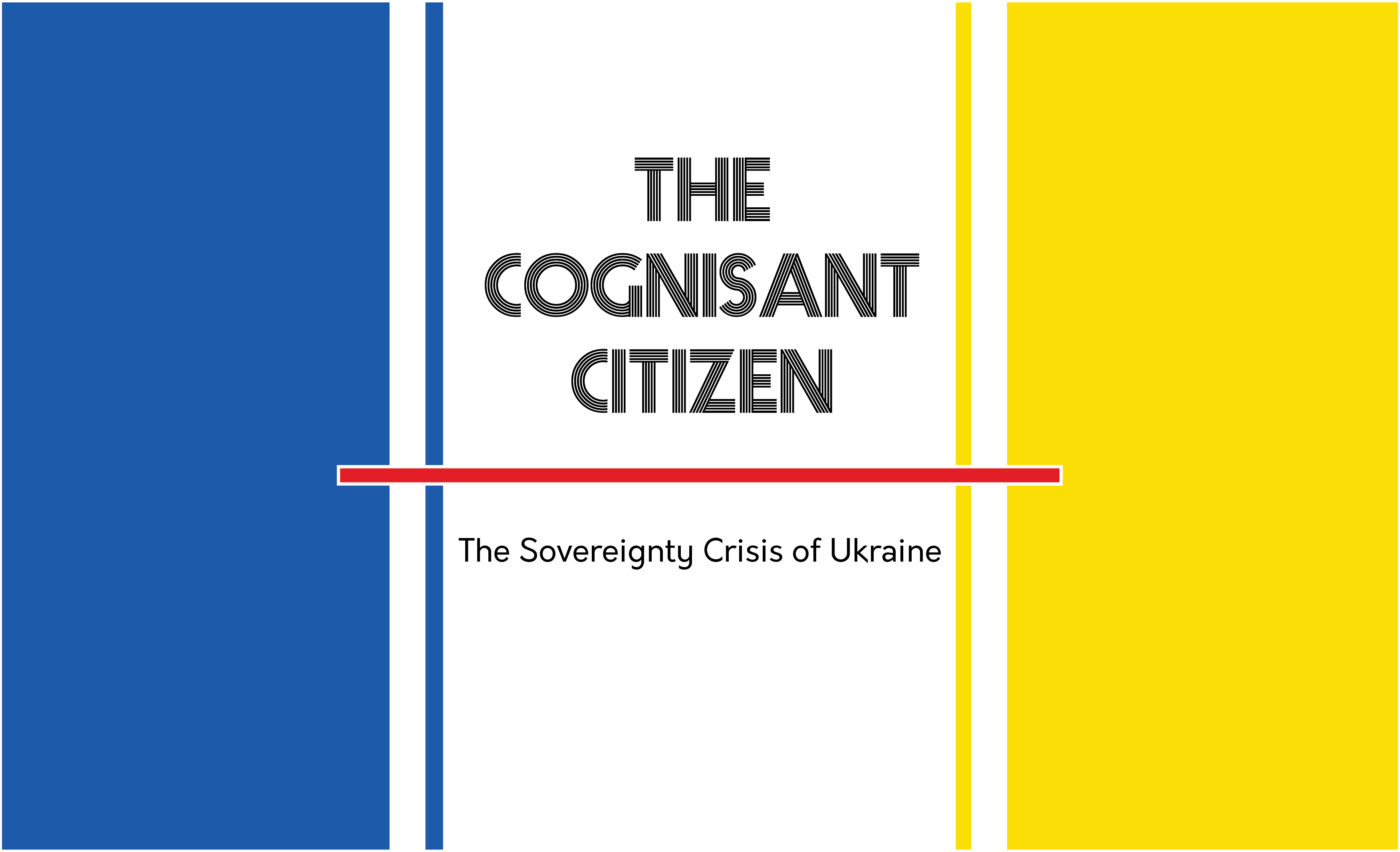
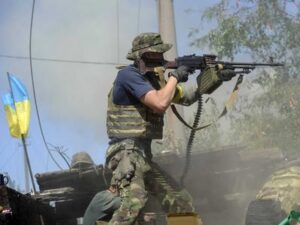

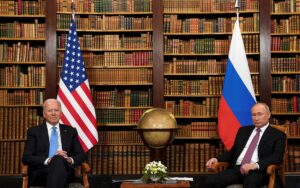
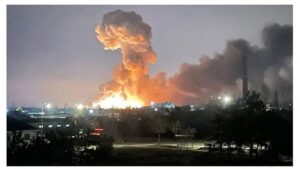
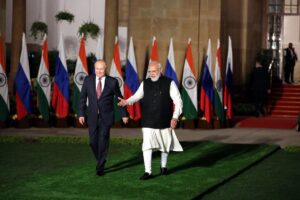
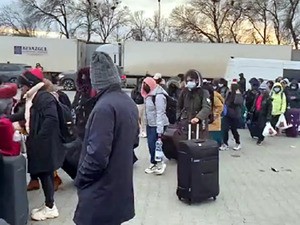
Leave a Reply
You must be logged in to post a comment.